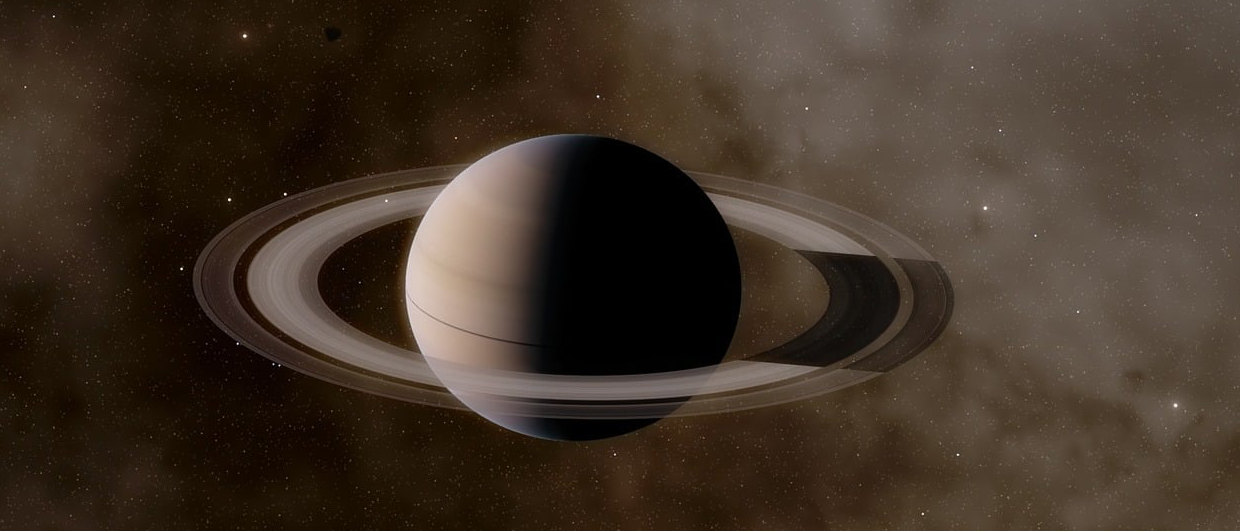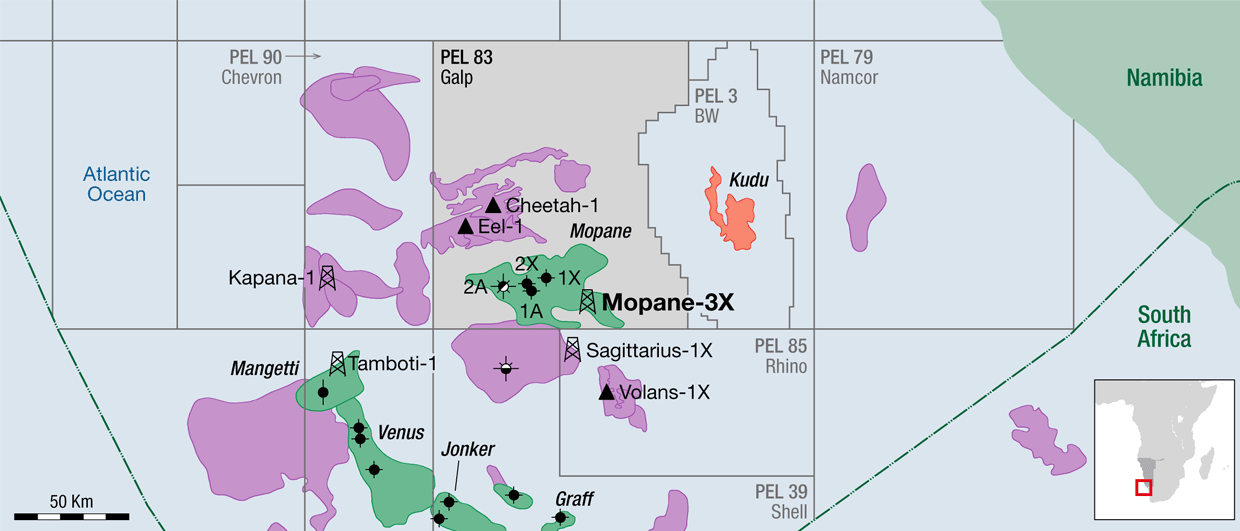Almost a month ago, Sintana Energy “broke” the news that Australian major Woodside decided not to exercise its right to farm into Licence PEL 87 in Namibian waters, north of the Mopane discovery. The decision did not cause a lot of stir, possibly because it was not a relinquishment as such. Still, it is not a good sign to see a major company decide not to move ahead after spending a significant amount on a high-spec 3D seismic survey across PEL 87, in which Pancontinental is the main operator (75%), partnered by Custos (15%, in which Sintana has a 49% direct interest) and Namcor (10%).
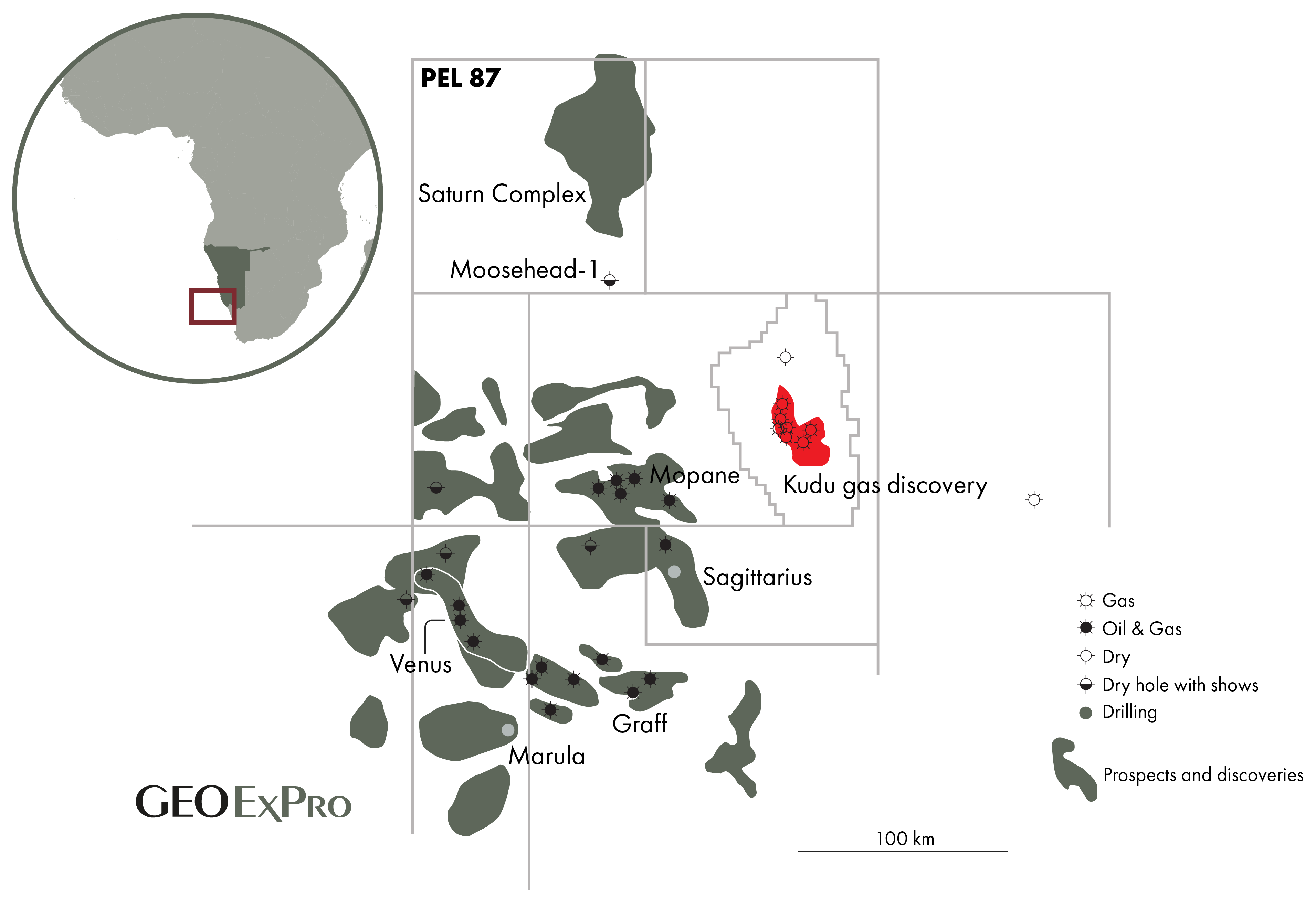
The most important prospective area within PEL 87 is the Saturn Complex, the size of which matches or even supersedes the extent of the discoveries a little further south. This then begs the question; what made Woodside decide not to embark on a Namibian adventure?
There is likely a subsurface element at play that caused the company to make this call, even though it cannot be ruled out that it was simply a matter of reduced appetite to go for something frontier and enter a new country. But let’s focus on the subsurface here. There are some seismic sections available from PEL 87 that may actually hint at a more complex subsurface setting than what might initially be assumed. This was flagged to me by geologist Jamie Vinnels last month.
In the latest Pancon (Pancontinental) Half Year report, some interpreted seismic lines and time slices were published that show the Saturn Complex. These images allow for making some inferences about the reservoir architecture of the sediments in the Saturn Complex.
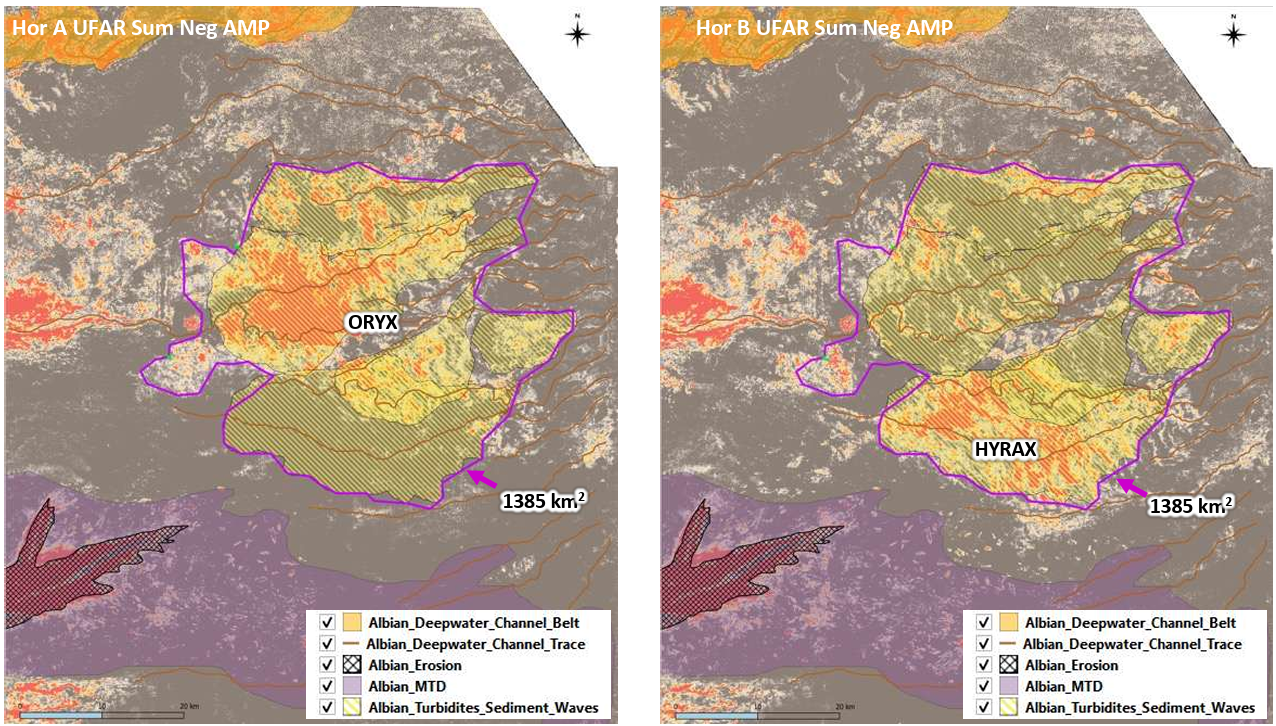
Looking at the time slice from the Pancon report (see above), which shows two leads within the Saturn Complex (Oryx and Hyrax), one might at first think that these represent channel-lobes complexes. However, two observations complicate this observation. First of all, the position of these prospects is only a few km from the shelf edge, which is usually the steeper part of the slope. This is the area that is often prone to sediment bypass, leading to the deposition of thin discontinuous sands on the slope, while delivering more substantial reservoir sands further into the basin.
Second, when taking a closer look at the amplitude responses within the mapped prospects, there is something else going on. Namely, some elongate ridges can be observed that run parallel to the paleo-shelf break – this can particularly be seen to the south of the “Hyrax” label in the image above. Considering the position of the Saturn Complex, these ridges could be interpreted as slumps that formed as a result of the shelf edge failing, which is not unthinkable given the position of this prospect with respect to the shelf edge. In addition, the failure scarp can in fact be seen in the seismic line that was also published by Pancon (see below).
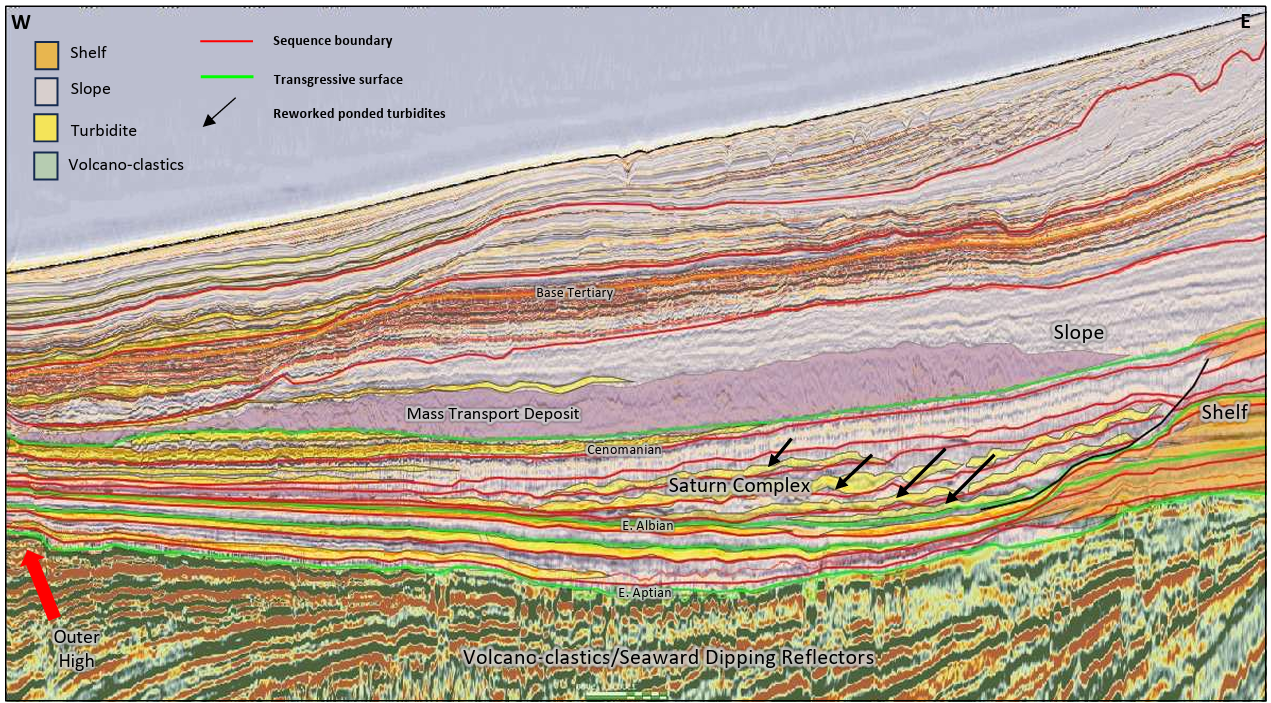
If these prospects are in fact slumped units rather than an undisturbed reservoir section, there is much more of a risk of compartmentalisation, which has detrimental effects on reservoir connectedness. This is not what companies will want to see in a deep-water frontier environment like Namibia, and might therefore have been a reason for Woodside to leave the area for what it is.

